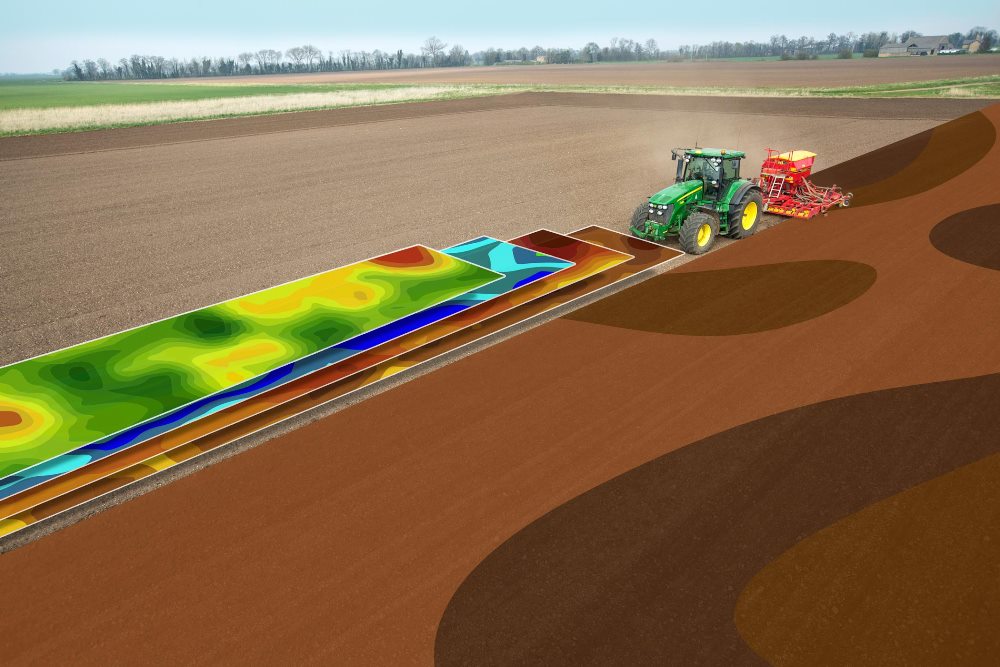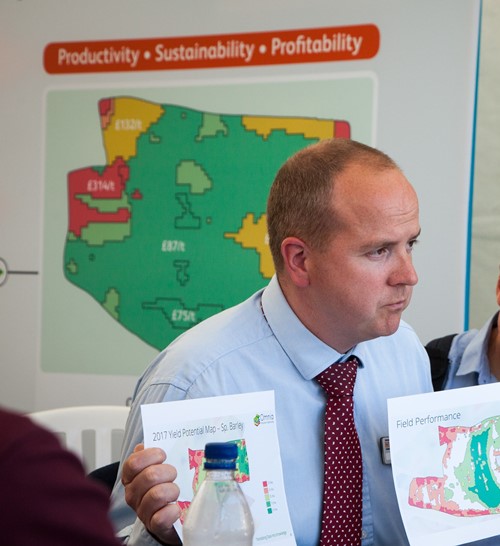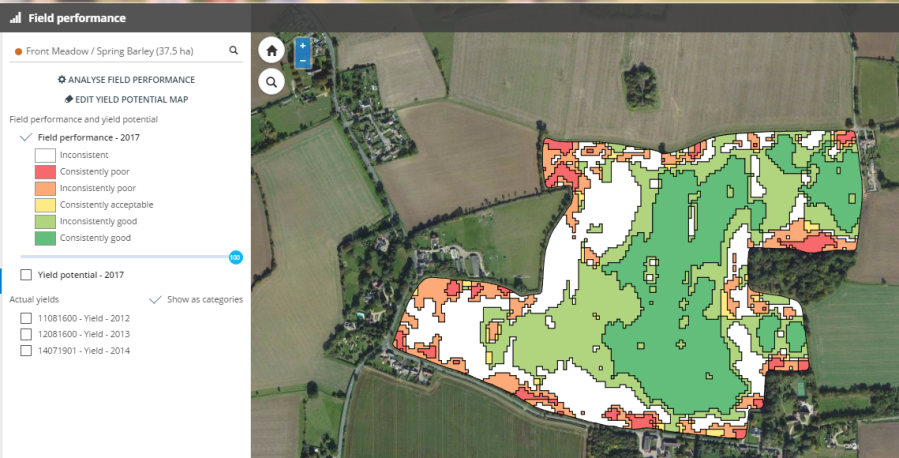
Arranging the vast array of data many growers have amassed into layers is how Omnia is claimed to bring better on-farm decision making. CPM reviews some of the tools that underpin the service.
A system that allows growers and agronomists to analyse multiple layers of field data to pin down under-performing areas and inform management decisions is the main benefit of Hutchinsons’ Omnia, according to service leader Matt Ward.
Omnia takes the raft of data now available to growers from a variety of different sources and enables “intelligent and informed decision-making” through Multi-Dimensional Analysis, he says.
Cost of production mapping allows growers to quickly identify areas of a field with low profitability.“Currently yield maps provide only a snapshot of the harvest, without any deeper knowledge on how the different areas of a field are performing,” explains Matt Ward.
“What’s more valuable is how these data are interpreted in conjunction with all the other factors that can affect yield and the consistency of that yield over seasons.”
A soil texture map, generated from an electrical conductivity (EC) survey is often the basis for many precision-farming related sub-field decisions.
Omnia arranges this as a layer over which other layers of data can be superimposed. Algorithms are used to help interpret the data and hone in on a solution for a problem patch.
Yield performance
Two new tools have recently been launched that help growers get value from this level of analysis.
Yield performance mapping capability makes it possible for growers and agronomists to identify and map areas of fields by categorising them in terms of the consistency of performance.
A second feature links this yield performance with cost of production, allowing growers to quickly identify areas of a field with low profitability.
But it’s not just yield-performance or soil-texture data that can be used. Omnia Plant Vision is a new way to collect and use crop biomass data.
A number of sensors, typically mounted on the farm sprayer boom, measure green area index through reflection of light from the crop canopy.

Omnia is not a prescriptive service, notes Oliver Wood – it’s about putting all the information in one place.
Omnia can also be used to help refine blackgrass control strategies
Lessons learned from Hutchinsons’ Brampton Blackgrass Centre of Excellence can be applied on a subfield basis.
Information supplied on soil condition, nutrient status and blackgrass populations can be overlaid with yield performance maps to help determine areas where seed rates may be increased or patches sprayed out, for example.
“Omnia is not a prescriptive service,” notes Hutchinsons’ precision technology manager Oliver Wood.
“It’s about putting all the information in one place, making it easy to interpret, and bringing in someone who understands the farm, such as the agronomist, to work with the grower to make better decisions.
“If data has already been collected through other systems, that can also be imported, and used within Omnia. Any data generated through Omnia is owned by the user, which is important as this allows for the data to be used in any way in the future- there are no restrictions on how it can be used or accessed,” he adds.
“Before, this information may have sat on a number of different platforms. Now you can bring it all into one place, analyse it, and make rational decisions that put you firmly in control of the crops you grow.”
More detailed information on Omnia and Omnia Precision is available at omniaprecision.co.uk




